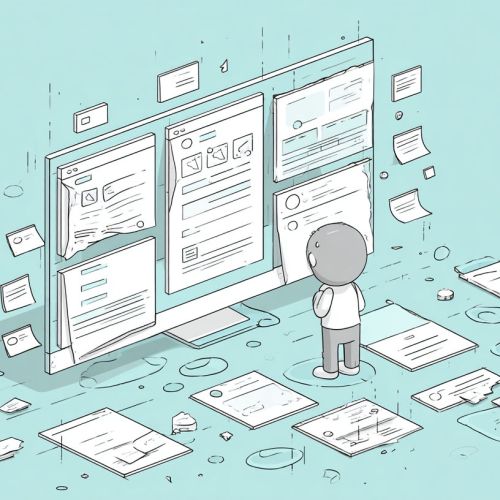In an increasingly AI-driven world, the OpenAI browser announcement marks a turning point for the browser wars. Expected to launch in just three weeks, this new AI-powered browser promises to challenge the dominance of entrenched players like Chrome, Edge, and Safari. For marketing leaders and digital strategists, understanding the stakes behind the OpenAI browser launch is critical for anticipating shifts in user behavior, advertising ecosystems, and the future of web browsing.
Imagine a digital marketer in 2024, juggling multiple campaigns while relying on conventional browsers and fragmented AI tools. Suddenly, a new player arrives — an AI-integrated browser engineered by the pioneers of artificial intelligence. How will this change the way users search, interact with ads, and consume content? What opportunities and threats does it pose to growth strategies and online ROI? This article peels back the curtain on OpenAI’s next move and unpacks why savvy marketing leaders need to prepare now.
The State of the Browser Market in 2024
To fully grasp the significance of the OpenAI browser launch, we first need to understand the current browser landscape — where it stands and why it is ripe for disruption.
Current Market Share and Dominant Players
As of early 2024, the browser market remains dominated by a few key players. According to recent data from StatCounter, Google Chrome holds roughly 65% of global desktop and mobile browser usage. Microsoft’s Edge has gained steady ground, accounting for about 10%, leveraging its integration with Windows 11. Safari maintains a strong presence at around 18%, predominantly on Apple devices. Firefox and other niche browsers like Brave and Vivaldi share the remainder.
Chrome’s dominance is not just a function of market penetration its integration with Google’s vast ecosystem of services gives it a near-monopoly on user data and ad targeting. Edge benefits from being the default on Windows machines, and Safari’s hold is strengthened by Apple’s ecosystem lock-in.
Stagnation and User Fatigue
Despite the dominance, browser innovation has plateaued. Over the last few years, most updates have focused on security patches, incremental UI improvements, and modest speed enhancements. User excitement about browsers is waning. Many express dissatisfaction with cookie tracking, privacy concerns, and fragmented experiences when leveraging AI tools online.
An increasing number of users are searching for browsers that prioritize privacy (such as Brave), personalization, or enhanced productivity, but mainstream browsers have struggled to deliver transformative AI-driven features that feel native or intuitive.
Differentiation Efforts and Niche Approaches
Several browsers have sought to chart alternative paths:
- Brave champions a privacy-first approach, blocking ads and trackers by default and introducing an opt-in ad system that rewards users with Basic Attention Tokens.
- Opera has experimented with AI tools integrated directly into the browser interface, including built-in chatbots and content summarization.
- Vivaldi caters to power users by offering extensive customization and control over workflows.
- Amazon briefly explored a browser niche but pulled back due to limited adoption.
Yet, none have cracked the code on fully integrating AI in a way that reshapes user behavior on a large scale.
Market Gaps: The AI and Productivity Void
The biggest opportunity lies in bridging traditional browsing with seamless AI assistance. Users want smarter search, contextual insights, real-time summarization, and interaction capabilities beyond typing in keywords and clicking links. This is where the OpenAI browser launch could be a game changer, potentially delivering an AI-powered browser experience that reshapes expectations for efficiency, creativity, and interaction.
Benedict Evans, a noted industry analyst, has commented that “The browser is ripe for reinvention, but the winner will be the one who embeds AI deeply without compromising speed, privacy, or usability.”
Why is OpenAI Launching a Browser? The Strategic Rationale
OpenAI’s decision to enter the browser market at this time is no accident. It’s a strategic play rooted in its mission and vision for the future of AI and the internet.
Background: From ChatGPT to AI-Native Tools
Since the breakout success of ChatGPT in 2022, OpenAI has expanded its AI portfolio aggressively. Its partnership with Microsoft has fueled innovations in AI-assisted productivity tools, including Microsoft 365 Copilot and integrations in Azure. OpenAI has demonstrated leadership in natural language understanding and generative AI, but most interactions still occur through fragmented apps or plug-ins.
Launching an OpenAI browser allows the company to consolidate AI-powered experiences into a single, unified platform designed from the ground up for intelligent browsing.
The Vision of an AI-Powered Browser
According to statements from OpenAI leadership, including CEO Sam Altman, the vision is to create an “AI-native browser” that transforms browsing from a passive activity into an active, productive, and hyper-personalized interaction. This means AI that understands context, responds conversationally, and helps users synthesize information on the fly.
Imagine not just searching with keywords but receiving synthesized, balanced insights, summaries, or actionable recommendations tailored to your needs—right inside your browsing experience.
Strategic Imperatives: Control and Data Access
Owning the browser means owning a critical distribution channel and a direct line to user intent. This grants OpenAI access to vast amounts of behavioral data needed to train and improve its AI models.
Moreover, traditional browsers often restrict access through APIs and impose limits on extensions and AI integration. OpenAI’s own browser can navigate these constraints, innovate faster, and potentially set new industry standards.
Potential Benefits and Risks
Benefits include new monetization models through sponsored AI results, unique user engagement features, and potential lock-in through AI-driven productivity gains.
However, this move also risks regulatory scrutiny given rising antitrust concerns about tech giants controlling critical internet infrastructure. There are privacy implications, too, as users and regulators push for transparency and control over AI data usage.
The Verge aptly summarized it: “OpenAI’s leap into the browser world is as audacious as it is inevitable in the evolution of AI-first software.”
How an OpenAI Browser Could Reshape the Web
The launch of an OpenAI browser, built for AI-enhanced experiences, could redefine how users navigate the internet, interact with content, and how marketers engage audiences.
AI-Driven User Experience Innovations
- Auto-Summarization and Intelligent Browsing: Users may no longer need to click through multiple pages to gather information. The AI could provide synthesized summaries of articles, compare viewpoints, and even generate outlines or reports dynamically.
- Voice and Multimodal Search: Beyond traditional text queries, the OpenAI browser might leverage voice input, image recognition, and video analysis to provide richer search results and interactions.
- Personalized Content and Ad Recommendations: By analyzing user interests and intent in real time, the AI could tailor search results and ads far more precisely than current approaches allow.
Such features would heighten engagement and make browsing more efficient, but also revolutionize customer journeys and content discovery pathways.
Privacy and Data Handling Challenges
OpenAI’s model requires significant data to train. Balancing user trust with AI’s data appetites will be critical. The browser may introduce new privacy controls or push standards for transparent data use.
Marketers and firms need to watch for how data flows, tracking mechanisms, and consent evolve alongside AI browser features.
What This Means for Advertisers and Marketing
If browsing becomes driven by AI-generated answers, traditional SEO may lose some influence as users rely on summarized insights rather than individual pages.
Advertisers could face a new gatekeeper shaping which ads reach users, potentially disrupting Google’s dominance in ad distribution. New ad formats embedded within AI results could emerge, mixing organic and paid content.
Performance metrics will shift, calling for fresh attribution models and measurement approaches.
Disruption to SEO and Content Strategy
Content creators and SEOs might need to optimize for AI comprehension and snippet generation rather than traditional keyword or backlink strategies.
The browser’s AI may prioritize trusted sources or curated content, altering user click patterns and traffic flows.
Brave’s early impact on publisher monetization offers a case study in how browser features can quickly reshape revenue models and user engagement patterns.
Competitive Responses from Google, Microsoft, and Others
OpenAI’s browser launch will not go unchallenged. Major incumbents are already preparing countermeasures to maintain their hold on the browser market and AI leadership.
Google’s Strategic Moves
Google remains the default browser for most users. To stay competitive, Google has doubled down on AI efforts through:
- AI Integration in Chrome and Search: Google is embedding its Gemini model to fuse AI chat capabilities directly into Chrome and Google Search for richer, conversational results.
- Project Magi: Google’s experimental conversational AI initiative aims to deliver personalized search experiences that rival OpenAI’s approach.
- Privacy and Trust: Google also continues to invest in privacy sandbox initiatives, easing regulatory fears and user concerns.
Microsoft’s Dual Role
As OpenAI’s key partner, Microsoft walks a tightrope:
- Edge’s AI Copilot: Microsoft’s Edge browser integrates AI features similar to OpenAI’s GPT models, offering smart assistance in browsing.
- Channel Dynamics: Microsoft must balance promoting both its own AI browser experience via Edge and supporting OpenAI’s browser, managing potential user confusion or cannibalization.
- User Incentives: Microsoft can bundle offerings with Windows and Office to encourage switching or multi-browser use.
Apple and Privacy-Focused Players
Safari and privacy-first browsers will likely emphasize data protection as a competitive advantage. They may not match AI sophistication immediately but could appeal to users wary of data harvesting.
Fast Followers and Niche Innovators
Mozilla and emerging projects might develop their own AI integrations or partnerships to remain relevant. Innovation in open standards and privacy will persist as a counterweight to the all-in-one AI browsers.
Implications for Marketers, Growth Leaders, and the Digital Ecosystem
Marketing leaders must prepare for a fundamental shift in how users find and engage with content, search engines, and advertising — all filtered through AI-powered browsing.
Rethinking Search and Content Discovery
The OpenAI browser launch signals a move toward an AI-first search model that:
- Synthesizes information on behalf of users
- Prioritizes context over keywords
- Blends search and browsing into one fluid experience
Marketers will need to adapt SEO and content strategies to be AI-friendly, focusing on trustworthiness, intent matching, and snippet optimization.
New Ad Formats and Measurement Challenges
Sponsored AI responses and contextual targeting will emerge as primary ad formats. Payment models may shift from clicks to engagement or AI-driven conversions.
Measurement frameworks must evolve to track interactions within AI summaries and conversational exchanges, raising questions about transparency and brand safety.
Privacy and Regulatory Considerations
With AI-powered browsers collecting complex usage data, privacy laws like GDPR and CCPA will come into sharper focus. Marketers must ensure compliance while leveraging AI insights ethically.
Proactive Strategic Adaptation
Growth leaders should:
- Monitor AI browser developments closely
- Invest in in-house AI competencies for content and data analysis
- Expand partnerships with AI technology providers
- Develop flexible strategies that anticipate rapid shifts in consumer behavior and platform capabilities
Marketing thought leaders like Scott Brinker emphasize that “embracing AI as a core strategy rather than a tactic will be the difference between leaders and laggards in the next decade.”
Conclusion
The imminent launch of the OpenAI browser promises a profound disruption in the browser wars and the landscape of digital marketing. As AI-powered browsers rise, competition will intensify among incumbents while creating unprecedented opportunities for user engagement, personalization, and productivity.
Marketing leaders must understand the dynamics of the OpenAI browser launch, anticipate how AI-driven user experiences will reshape search, advertising, and privacy, and prepare to adapt their strategies accordingly.
Looking forward, the future of web browsing will likely be inseparable from AI, blending intelligence and interface in novel ways. Will your organization be ready to harness this transformation or be caught flat-footed?
What features do you hope the OpenAI browser will offer to your team and customers? How are you gearing up for the seismic changes the AI browser era will bring? Share your thoughts and strategies as we navigate this exciting new frontier together.






